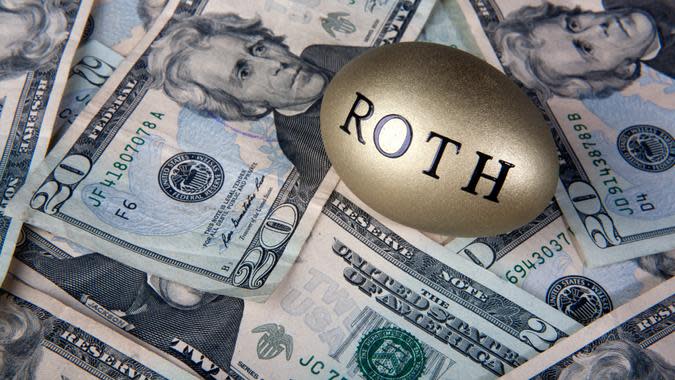10 Actionable Ways To Improve Your 401(k) Today

Your 401(k) plan can be the single best chance you have to maximize your retirement savings. However, just having a 401(k) plan doesn’t necessarily mean you’re destined for a sizable nest egg.
See: Jaw-Dropping Stats About the State of Retirement in America
Read More: The Biggest Problems Facing Social Security
To really get all you can out of your 401(k) plan, you’ll have to take some actionable steps. Here’s a list of 10 of the best ways to improve your 401(k) plan and make sure you’re taking advantage of all that it can offer.
Last updated: Sept. 20, 2021

Take Full Advantage of the Company Match
One of the top advantages offered by many 401(k) plans is the company match. Although not all companies participate, most will match a certain percentage of what employees contribute to the plan. Typically, an employer match is 100% of the first 3% to 6% of the salaries that employees contribute.
For example, if you’re earning $100,000 and you contribute 5% of your salary to your 401(k) plan, you’re putting in $5,000 per year. If your employer matches 100% of contributions up to 6% of your salary, it will kick in an additional $5,000 on your behalf. This is just about the only way to get “free money” in the investment world, and over time, those employer contributions can really add up. To maximize your 401(k) balance, you should contribute at least enough to qualify for your full employer match.

Increase Your Contribution Level Annually
Although many financial advisors recommend that investors sock away at least 15% of their earnings, that’s not always realistic for some workers, especially those just starting out. One easy way to increase your contributions over time without causing much pain is to raise your contribution by just 1% or 2% annually. Eventually, you’ll reach that 15% contribution level, and it’s likely that you won’t even notice the incremental increase in your contributions.
For example, let’s say you make $40,000 per year and are contributing 5% of your salary, or $2,000 annually. If you bump that up by just 1% next year, you’ll end up contributing $2,400. That’s an increase of just $33.33 per month.
Find Out: Here’s How Much You Should Have in Your 401(k) Account, Based on Your Age

Watch Out for Fees
Fees are one of the worst aspects of any 401(k) plan. Unfortunately, employees are stuck with contributing to the 401(k) plan that their employer offers. However, there are two ways to combat this. First, look for investments within the plan that charge the smallest amount of fees. Some 401(k) plans are blessed with low fees throughout, but others have both high-cost and low-cost investment options, so shop around within the plan. Second, if the total fees on your 401(k) plan are exorbitant, talk to your employer about finding another 401(k) provider. You’re likely not the only employee who would be complaining about high fees, and switching to a lower-cost provider might save money for your employer as well.
See: 27 Best Strategies To Get the Most Out of Your 401(k)

Choose Your Investments Wisely
Just putting money into a 401(k) plan isn’t a guarantee that you’ll have a pot of gold waiting for you in retirement. You’ll have to choose investments that can get you there. No matter how much money you put into it, a simple savings account isn’t likely to get you where you want to be when you retire. You’ll have to take some risk, in the form of stocks, bonds and other investments. Just make sure you consult with your financial advisor to pick investments that match your objectives and risk tolerance.
Check Out: 30 Greatest Threats to Your Retirement

Consider After-Tax Contributions
After-tax contributions aren’t as beneficial as traditional pretax 401(k) contributions. After all, with an after-tax contribution, you don’t get any tax deduction at the time you put money in, and you’ll still owe taxes on your earnings when you pull the money out. But If you’ve already maxed out your pretax contributions, you can still make after-tax contributions and benefit from the growth of investing that money. For tax year 2021, the maximum pretax contribution limit is $19,500 -- or $26,000 if you’re 50 or older -- but the after-tax limit is significantly higher, at $58,000 (or $64,500 for those 50 and older).
Options: 50 Best (and Worst) Cities for an Early Retirement

Avoid Taking Early Withdrawals
Over time, your 401(k) plan is likely to grow to the largest asset you have, with the possible exception of your house. If you find yourself in a cash crunch, it can be tempting to see that big pool of money just sitting there and think that you could just “withdraw a little” without any major consequences. You should resist this impulse as much as possible. For starters, you’ll typically have to qualify for an extreme hardship to get any money out of your 401(k) prematurely, and even then, in most cases, you’ll face income tax and a 10% penalty on your distribution. You’ll also be forgoing all the investment gains you would have realized over time if you had simply left your money in your account.
Read More: A Troubling Look at the State of Retirement in 2021

Utilize Free Company Resources
No 401(k) plan exists in a vacuum. Your company likely offers all kinds of support with your 401(k) plan, in the form of pamphlets or brochures, online and/or telephone assistance and even in-person advisory services. You should take advantage of any and all of these services, which are provided free of charge and can help you become a more successful 401(k) investor.
Be Aware: 35 Retirement Planning Mistakes That Waste Your Money

Ask For a Roth 401(k) Option
A Roth 401(k) is a fairly new option in the retirement planning landscape, and not all companies offer it. Essentially, a Roth 401(k) is an upgrade over an after-tax contribution to a 401(k) plan. Contributions do not qualify for a tax deduction, but earnings grow tax-free, and qualifying distributions are also tax-free. This is in contrast with after-tax 401(k) contributions, in which earnings are taxable upon distribution. If your employer doesn’t offer a Roth 401(k) option, ask for one.

Be Careful With 401(k) Loans
Although a 401(k) loan is not quite as damaging as an early distribution, it can be a land mine nonetheless. While it’s true that you pay interest on your 401(k) loan back to your own account, you’ll still be missing out on the potential appreciation of the assets that are no longer in your account. Even worse, if you switch jobs, you’ll likely face immediate repayment of your entire loan balance. If you don’t have the cash to pay it back, the IRS will treat your 401(k) loan as a distribution, subject to taxes and penalties like any other.
Find Out: 14 Key Signs You Will Run Out of Money in Retirement

Take Advantage of the Retirement Savings Contributions Credit
If you're a lower-income employee, you may qualify for a gift from the IRS that can help turbo-charge your 401(k) plan. The Retirement Savings Contributions Credit, also known as the Saver's Credit, is a tax credit that can earn you 10%, 20% or even 50% of the amount you put into your 401(k) plan, up to an annual limit of $2,000, or $4,000 if married filing jointly. For tax year 2021, joint filers can earn the maximum 50% credit with an adjusted gross income of not more than $39,500. However, a joint AGI of up to $66,000 is still enough to qualify you for a credit of 10% of the amount you contribute. Many taxpayers overlook this valuable credit, but it's a great way to maximize the amount you can contribute to your 401(k) plan.
More From GOBankingRates
Social Security Benefits Might Get Cut Early — What Does It Mean for You?
Here’s How Much You Need To Earn To Be ‘Rich’ in 23 Major Countries Around the World
This article originally appeared on GOBankingRates.com: 10 Actionable Ways To Improve Your 401(k) Today

